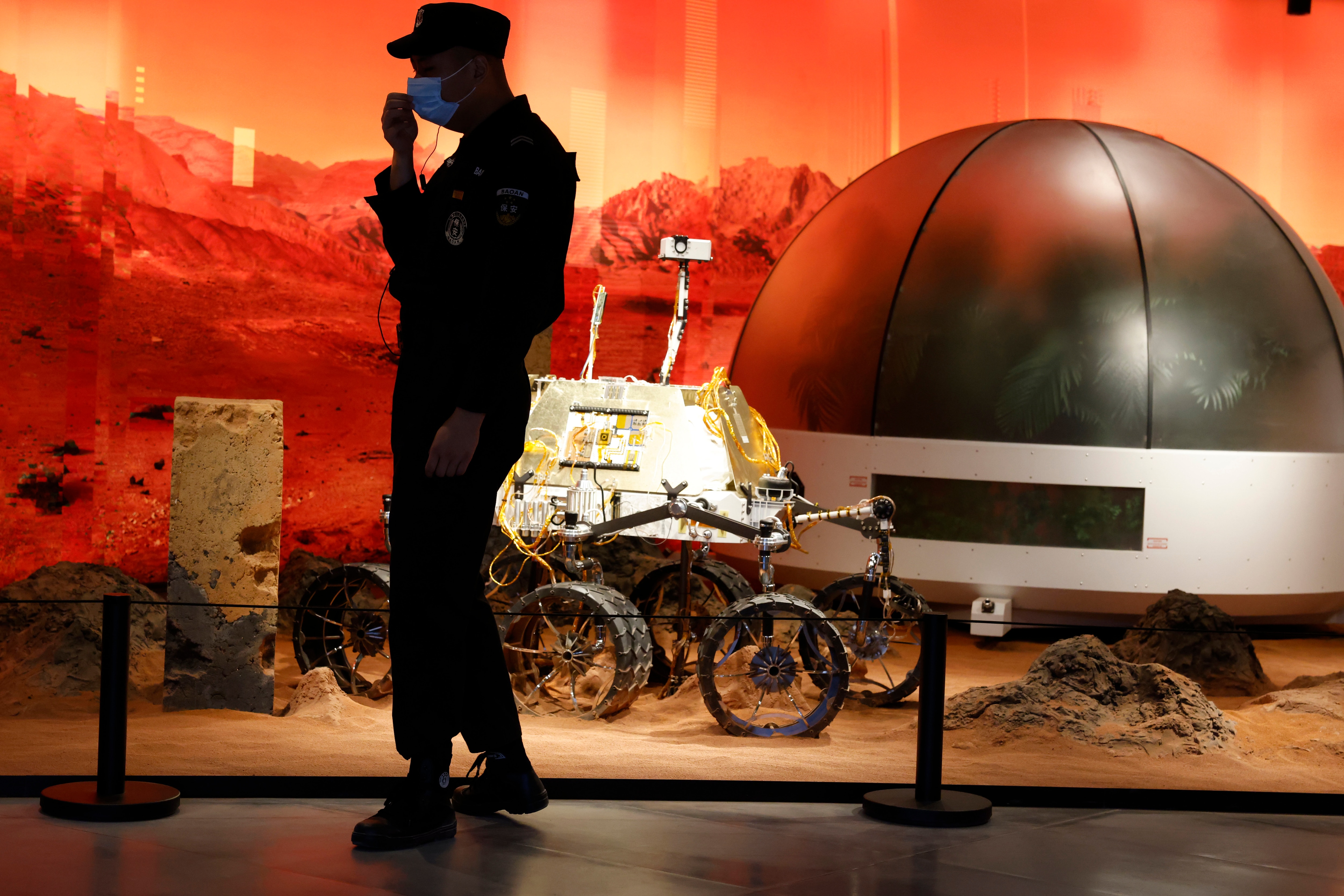
Whereas NASA is seeking partners for its Artemis Program, Russia and China are pursuing an agreement of their own. They call it the International Lunar Research Station (ILRS), and they too are looking for partners.

Carbon pollution from China's coal-intensive economy last year outstripped the carbon pollution of the US, the EU, and other developed nations combined, making up a 27 % of all greenhouse gas emissions worldwide.

China’s first Mars rover safely touched down Friday and began sending data back to Earth, joining the United States as the only two nations to successfully land and operate a spacecraft on the surface of Mars.

China has launched a key module of a new permanent space station, the latest in Beijing's increasingly ambitious space programme. Although 5B rocket is "unpredictably" falling back to Earth after launching the module.

A day after the UAE's Hope probe entered into the orbit of Mars, China has followed suit. In May, the probe will land a Chinese rover on Mars. The goal of Tianwen-1 is to survey the atmosphere from orbit.

Thanks to China’s Chang’e-1 and Chang’e-2 lunar orbiters, the number of known craters on the moon’s surface is now more than a dozen times larger than the 9,137 craters that are officially recognized.

A Chinese probe transferred rocks it gathered from the moon to an orbiter on Sunday in preparation for returning samples to Earth for the first time in almost 45 years, the country's space agency announced.

The HL-2M Tokamak reactor is China's largest and most advanced nuclear fusion experimental research device, and scientists hope that the device can potentially unlock a powerful clean energy source.

China launched an ambitious mission on Tuesday to bring back rocks and debris from the moon’s surface for the first time in more than 40 years – an undertaking that could boost human understanding of the moon and solar system.

China sent "the world's first 6G test satellite" into the orbit with a launch of Long March 6 carrier rocket on Friday. The satellite will become "the first technical verification of terahertz communication" tested in space.

On Sept. 4th, China launched a new and mysterious spacecraft. The nature of the spacecraft remains unknown, but it’s a reusable spaceplane. The spaceplane spent two days in orbit before coming home.

An unmanned spacecraft blasted off Thursday on a yearlong journey to Mars. The Tianwen-1, which translates into “Questions to Heaven,” is expected to reach the Red Planet by February.

The Chinese space agency is building a brand new space station, and they're going about it in a suitably impressive way: an ambitious schedule of 11 planned launches crammed into only two years.

China’s first in-orbit 3D printing test involved producing continuous carbon fiber reinforced polymer composites. This is the first time this has been done in space by anyone.

Non-degradable bags will be banned in major cities by the end of 2020 and in all cities and towns by 2022. The restaurant industry will also be banned from using single-use straws by the end of 2020.